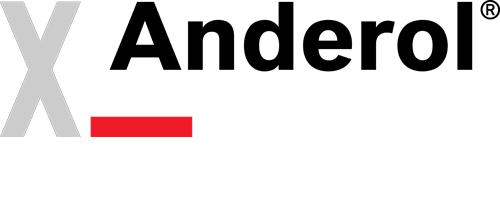
Compressors, like all machines,need lubrication. Lube oil is expensive. Machinery manufacturers of all types have made great strides resulting in improvements regarding product quality and length of their useful life. Still, after fuel (or power), the most expensive “consumable” in running machine is the lubricating oil.
by: Roberto Chellini DOWNLOAD FULL ARTICLE (PDF)
DOWNLOAD FULL ARTICLE (PDF)
Exceptions do exist. Hermetically sealed compressors with active magnetic bearings operate without lube oil. However, for the time being, the population of machinery equipped with magnetic bearings is relatively small. According to Anderol, a specialist in the supply of synthetic lubricants, lubricating oil is still required in 99.99% of the compressors and all other rotating equipment currently in use. According to Anderol, selecting the correct lubrication oil not only increases the life of a machine, it also lowers maintenance costs and enhances the safety, productivity and reliability of the whole plant. How an operator can achieve “correct lubrication” of a compressor depends on the importance this operator gives to a series of factors such as cost, environment, maintenance, safety, productivity, purity of the product and other variables.
The marketplace offers a variety of ineral and synthetic oils from which an operator can select. Operators can choose the type and quality they believe will best deliver performance hat will help their machinery meet the specific target goals set for it. Anderol, which offers a wide range of lubricants specifically formulated for various compressor applications, has produced a table comparing long run (10,000 hours) operating costs of a 300 hp (220 kW) screw compressor lubricated with mineral oil versus an identical machine lubricated with synthetic oil.
The capacity of the compressor lube oil system was 52.8 gal. (200 L). For purposes of this evaluation, the cost per liter of PAO (synthetic) oil was considered to be over three times that of mineral oil. In the course of 10,000 operating hours, the mineral oil was changed every 1000 operating hours, or a total of nine times. The PAO synthetic oil did not need to be changed during that time. Mineral oil consumption of 26.4 gal. (100 L) was double the 13.2 gal. (50 L) recorded for the compressor operating with the PAO lubricant. Based on those results, at the end of the 10,000-hour test period, the total lubricant consumption was 554.8 gal. (2100 L) for the compressor running on mineral oil. In all, the compressor in which it was used consumed 66 gal. (250 L) of PAO.
Anderol said the reduced oil consumption reflects the quality of the product, which in this case resulted in a carry-over rate of 3 ppm with the synthetic lubricant, and 24 ppm in the machine lubricated with conventional mineral oil. By Anderol’s calculation, when one takes into account the number of filter changes (10 against two) and the labor required for oil and filter changes, choosing synthetic oil in this instance delivers a saving of 67% when compared to choosing mineral oil. The company said that one could generalize the results of their test case, as a similar pattern can be found for different sizes and types of compressors.
Users often ask Anderol Technical Services staff to explain why they would benefit from a shift over to a synthetic-based product. The company sites four factors to consider when making that decision. The use of synthetic products allows maintenance shops to reduce and rationalize their product stocking requirements. With traditional lubricants, according to Anderol, those shops need to stock a wide inventory of ISO grade oils and NLGI grade greases. Having already rationalized one’s inventory by eliminating products no longer requested or used, the next logical rationalization step is to shift to synthetic lubricants in the place ofmineral oil-based products, according to Anderol. The potential inventory reduction leads to reduced costs. Anderol’s reasoning is that synthetic lubricants are effective over a wider temperature operating range and offer longer storage stability than do mineral oil-based products. For example, the company said that if one piece of equipment uses an ISO 68 mineral oilbased fluid and another uses an ISO 32 mineral oil, both of those lubricants can be replaced by an ISO 46 synthetic-based product in most cases. This is possible, Anderol said, because of the high Viscosity Index value of the synthetic and its ability to perform at very low temperatures.
Second, well-run maintenance shops create an inventory of all lubricants required with review of storage and handling policies and shelf life protocol. Due to what Anderol describes as their superior physical properties, the shelf life of most synthetics based on PAG, PAO and/or PAO/ester chemistry run around five to 10 years. The shelf life of mineral oils, Anderol said, is one to two years. Longer storage life results in less disposal cost. Another storage factor in favor of synthetics is that their characteristically higher flash and fire points, as well as auto ignition temperatures, help create a safer environment on the work floor. In addition, Anderol said synthetics usually have a lower toxicity level, a fact that can benefit workers’ health.
Third, because the use of synthetic lubricants results in lower consumption and extended fluid life, their use minimizes the impact of lubricants on the environment, according to the company. In addition, although synthetics eventually need to be disposed of properly, they are generally less toxic and therefore pose fewer environmental challenges. Finally, Anderol said equipment running on synthetics, especially those based on PAG, PAO/ester and ester-base stocks, experience lower vibration and operating temperatures. “Those lower values relate directly to the inherent high polarity of these base stocks in addition to their superior thermal conductivity. Cooler and smoother (noise reduction) running translates in an extension of the service life of the equipment,” according to the company. “Their ability to lubricate even in severe-duty applications gives them a big advantage toward the future since more and more machines are driven up to the maximum of their capabilities,” Anderol said. “In these circumstances mineral oils tend to lose their capabilities to provide the minimum required protecting film thickness.”
The company said many synthetic lubricant formulations incorporate ashless additives containing little or no heavy metals (zinc, magnesium and lead, for example) that provide natural protection against corrosion. According to Anderol, all these features allow the operator to reduce maintenance costs, downtime, energy consumption, emissions, disposal costs and lubricant consumption, all resulting in significant savings. Those benefits can be maximized by maintaining and monitoring the lubricant with a used oil analysis program.
Anderol said it offers such a service, and using it can add additional potential savings by determining (and potentially extending) lubricant service life based on objective test results. Anderol cautions that mixing mineral oil with synthetic lubricants should be prevented as often as possible due to the possible incompatibility of additives but also because the mineral oil might have a negative impact on the superior quality of the synthetic fluid. Therefore, the company recommends that before switching to synthetic lubricants, one must thoroughly clean all lubricated components, flush the lube oil system and change the oil filters.





